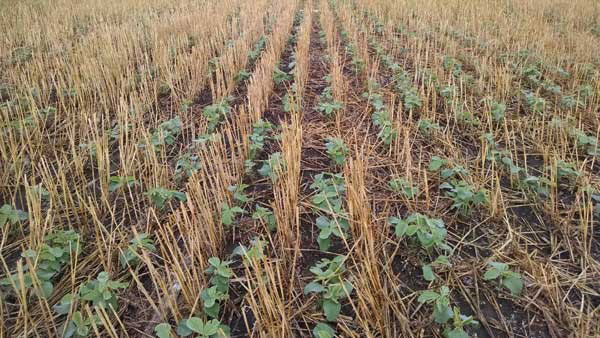After announcing expanded crop insurance options for double-croppers in July, the USDA's Risk Management Agency (RMA) has issued a handy set of pointers for growers looking to take out insurance on a second crop.
For now, the agency is focused on double-crop soybeans and double-crop sorghum, though they are examining the possibility of additional other crops at some point in the future.
"While RMA is primarily focusing on soybeans and grain sorghum, we will continue to fine-tune these flexibilities and attempt to broaden this initiative to other commodities which are commonly double cropped," the FAQ reads in part. "Although there have not been any specific changes to other commodities that are commonly double cropped at this time, some may already be insurable in your area."
It turns out not all coverages are created equal. In most counties on the soybean list (62%) where the expanded options are available, general crop crop insurance is available for the second round of a double crop. In about 40% of total counties, a written agreement, which is can be used to modify existing agreements, or can be extended over multiple years, is available instead.
Written agreements can involve separate requirements for past histories. However, in about 19 percent of counties included on the soybean list, no history is required.
Written agreement requirements can differ according to county, and the agency is working to provide additional guidelines specifically about them.
Among the items included in the FAQ is a comprehensive list of counties where coverage is available for both soybeans and sorghum.
The soybean list includes 1,944 counties total where some measure of protection is available. The sorghum list contains 870 counties where some form of expanded coverage is available for a sorghum double-crop.
In 1,204 of the soybean list counties(62%), full crop insurance coverage is available for a second crop. In 372 (19%) of the counties listed, a written agreement option is available instead of a full policy. In another 368 (19%) of counties with double crop options, a written agreement is available without a prior history requirement.
An average of 90% of all counties or equivalents are covered in the USDA-defined Corn Belt, which includes the "I-states", Ohio, Minnesota, and Nebraska. In Illinois, Indiana and Iowa, all counties are eligible for some form of coverage for soybeans. In Ohio, 87 of 88 (99%) of counties have expanded coverage. In Nebraska, 72 of 93 counties (77%) have expanded coverage. In Minnesota, 57 of 87 (66%) counties have expanded coverage.
On average, 2/3 of counties the 29 non-Corn-Belt states where double crop insurance is available for soybeans have expanded options, including all 3 Delaware counties and all 46 counties in South Carolina.






